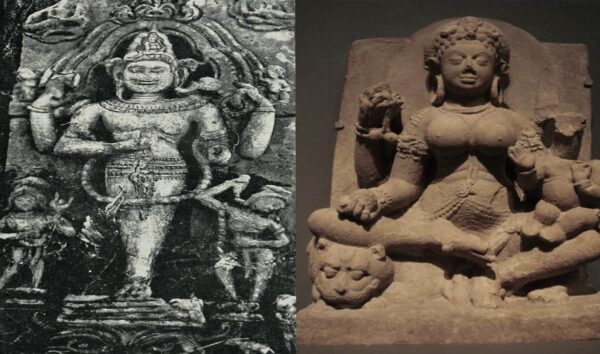The Development of Social Transformation Phase of Tribal and Pastoral Life throughout the “Rig Veda”
There are no documented sources for researching pre-Vedic civilisation. According to archaeology, tiny groups of people resided in the hilly regions during the Palaeolithic era.
Their primary sources of nourishment were the natural fruits and roots we obtained and the game they killed.
Near the conclusion of the Stone Age and the beginning of the usage of metal, man discovered how to cultivate food and build homes.
Communities from the Neolithic and Chalcolithic periods inhabited the uplands around hills and rivers.
The Indus basin region saw the gradual establishment of peasant communities, which eventually grew into the urban society of Harappa with both huge and small buildings.
However, urbanisation did not return to the Indian subcontinent for about 1500 years after the Harappan civilization vanished.
Phases of the tribal and pastoral
Documents can be used to trace the history of a society beginning with the Rig Veda. Despite their knowledge of agriculture, they assert that the Rig Vedic society was predominantly pastoral in nature. Cattle and horses were the primary belongings of the semi-nomadic population.
In the Rig Veda, the words cow, bull, and horse are regularly used. A wealthy individual was referred to as gomat, and cattle were thought to be a universal symbol of wealth.
Wars were fought for cattle, hence the raja was known as a gopa or gopati because his main duty was to defend the cows.
The daughter was given the name Dubin, which means a milker because the cow was so essential to the family’s ability to survive.
The Vedic people’s relationship with kine was so close that when they discovered the buffalo in India, they referred to it as govala, meaning cow-haired.
Contrary to references to cows and bulls, Rig Veda’s later hymns contain more references to agriculture. Thus, raising cattle served as the primary means of subsistence.
The Development of the Upper Orders and Agriculture
The Vedic people mainly became farmers when they relocated from Afghanistan and Punjab to western UP. Archaeology demonstrates that a settlement persisted for two to three centuries throughout later Vedic periods.
Territorial chiefdoms were born as a result. The princes could offer sacrifices and pay their priests with the tributes they collected from peasants and others.
The later Vedic farmer paid the warriors and nobles, who in turn gave gifts to the priests. They also paid the priest’s sacrificial costs.
Food was provided by the peasant to the smiths, chariot builders, and a substantial portion of the new warrior class.
The later Vedic peasant, however, was unable to contribute to the development of commerce and towns; this characteristic was noticeable in the age of the carpenters, who gave rise to the Buddha. Iron was used on a limited scale in later Vedic society, but metal money was unheard of.
The production and governmental system of Varna
In the post-Vedic era, three processes occurred simultaneously. They were the Aryanization, industrialization, and urbanisation processes.
Aryanization denoted the expansion of Indo-Aryan tongues like Pali, Prakrit, and Sanskrit. Additionally, it connoted women’s enslavement and the rule of the higher classes.
The first three varnas, omitting the Shudras and dasas, were referred to as Arya in later Vedic writings. The Arya was revered even in Buddhist culture. Aryanization in the post-Vedic periods was the process of assimilating non-Aryan tribal groups into the Brahmanical civilization.
The proliferation of low-carbon steel tools and weaponry was known as ionization. It transformed agriculture, crafts, and settlement density.
The monarchs who expanded the borders of their states and promoted the varna system also saw a rise in their military capability as a result of this process.
The development of towns, or urbanisation, benefited merchants and craftspeople and increased state revenue.
Social Unrest and the Ascendance of the Landed Classes
The Gangetic plains and the surrounding region, which experienced a succession of big states, enjoyed good system performance for several centuries.
Trade and urbanisation boomed during the 1st and 2nd centuries AD. The arts grew more than ever during this time.
About the third century was when the old order’s apogee occurred, and after that, it seems that its progressive role was no longer needed.
The previous societal structure was suffering from a severe crisis in the third century AD.
The Puranas sections that deal with the third and fourth centuries describe the Kali age in a way that amply reflects the crisis.
The Kali era is known for varnasankara, or the mixing of varnas or social orders, which denotes the refusal of the vaishyas and Shudras (peasants, artisans, and labourers) to carry out the producing duties assigned to them.
Specifically, the vaishya villagers refused to pay taxes, and the Shudras didn’t want to make their labour easily accessible.

